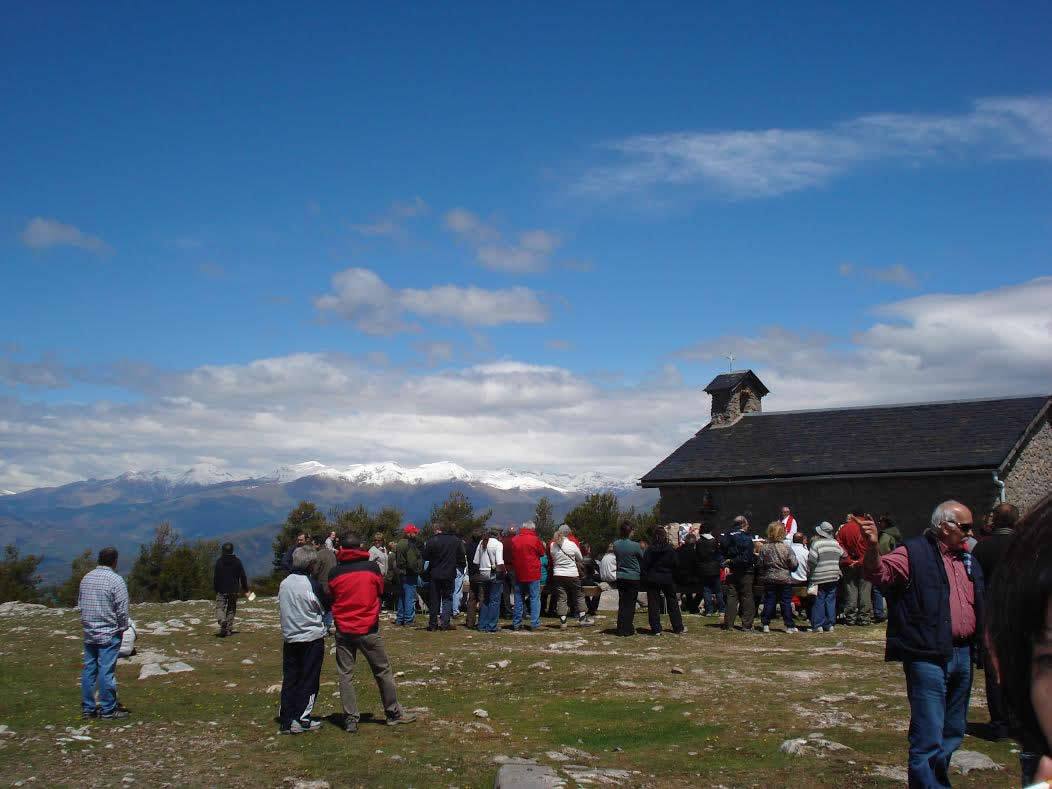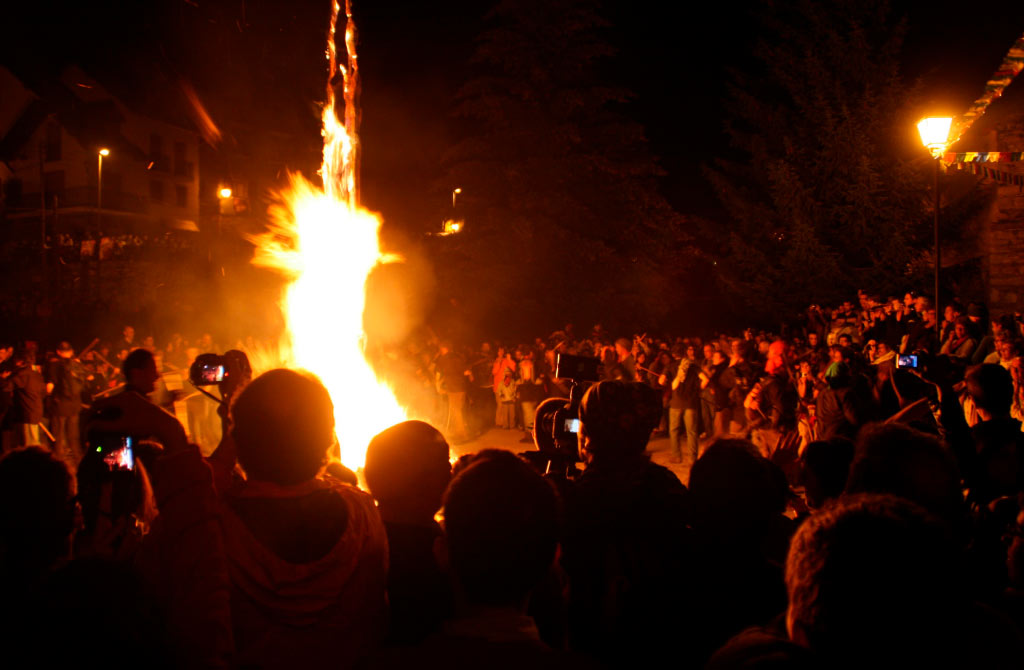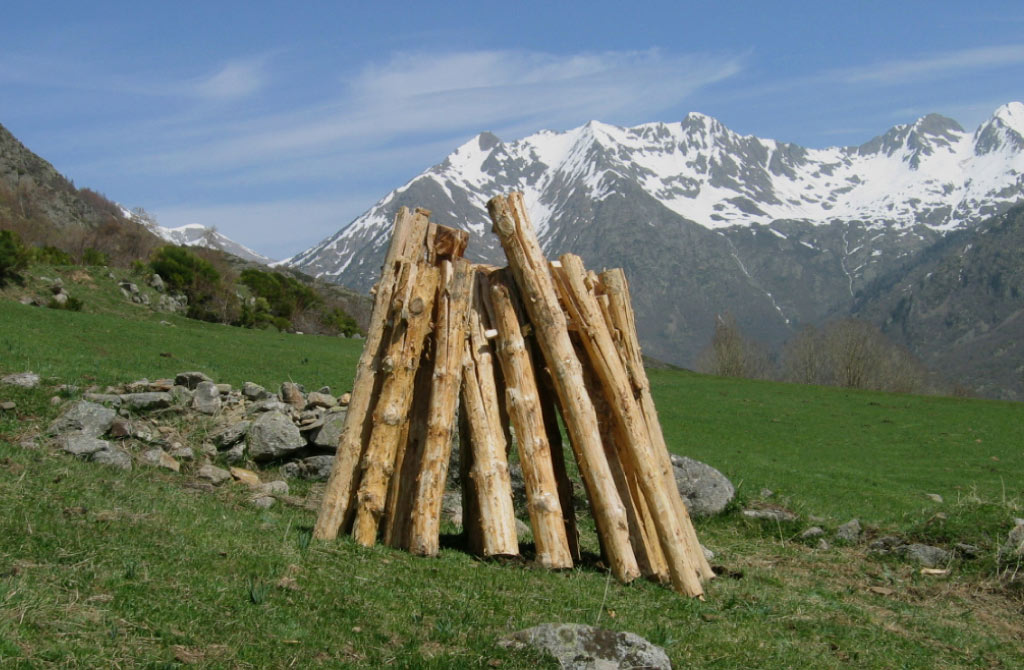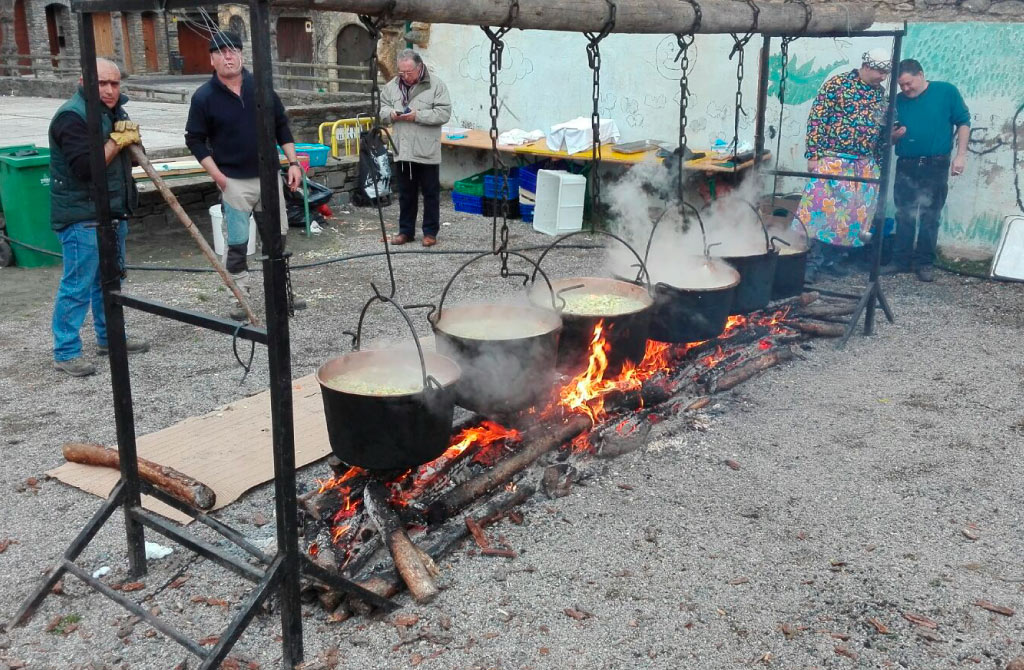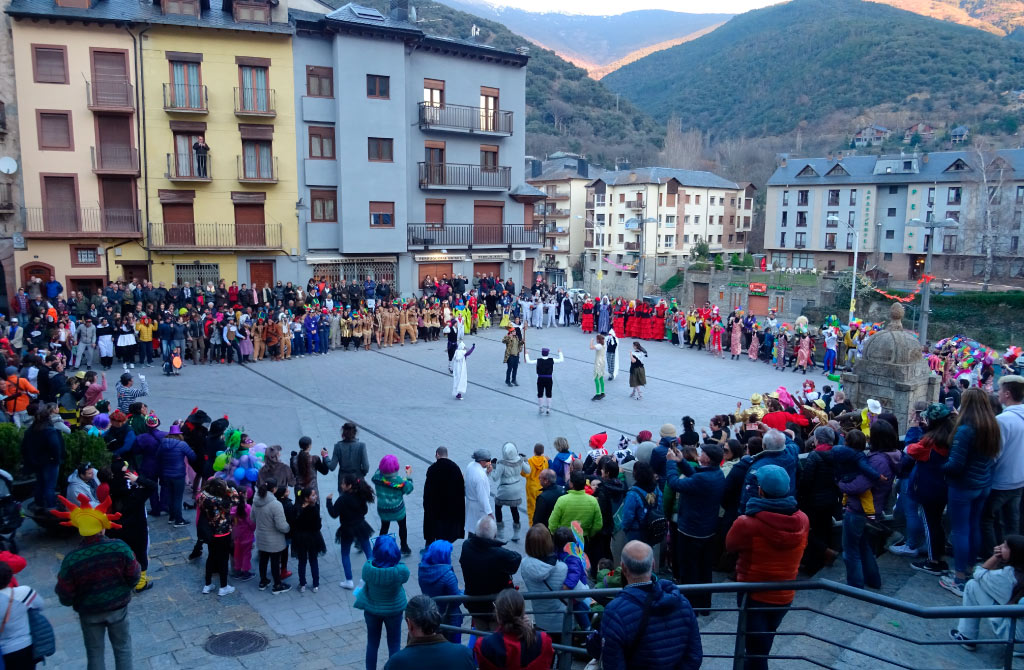INTANGIBLE CULTURAL HERITAGE OF THE PYRENEES AND THE LANDS OF LLEIDA
EL PALLARS SOBIRÀ
AN ANCESTRAL ADVENTURE
El Pallars Sobirà is a land of adventures. This comarca (local district), which lies beneath the immense Port de Bonaigua mountain pass and moves to the rhythm of the mighty River Noguera Pallaresa, encapsulates the timeless essence of the Pyrenees. Each village which sits perched above its valleys, on a high rocky outcrop, has a unique quality has managed to conserve the history that has made it unique. Peaks, gorges, lakes, and villages whose homes are carved from a local dark-stone, blend perfectly into the landscape and together create an unforgettable destination for visitors. As well as its natural beauty there is a special strength of spirit that has helped to establish this area as one of intangible cultural heritage. This is largely due to its mountain character, which is – at the same time – both strong and sensitive. The legacy of the padrins (older generations) is there in every conversation, and in every word spoken in Pallarès, which is a remnant of an older ancestral culture. We are entering the Pyrenean soul of El Sobirà.
The journey
Visitors note the tranquillity of the valleys of El Sobirà thanks to the hypnotic music of the waters of the River Noguera Pallaresa. Everything appears to be calm until something suddenly changes things. The Aplecs Populars (social gatherings) that are held here, in the heart of the Pyrenees, have the air of a shindig or a good old-fashioned knees-up about them. Friends, neighbours, cousins, and the padrins (older people) – who top the pecking order – will encourage visitors to pull up a chair and share in the feast laid out in the shadow of the church. This is a ritual that is eagerly repeated to commemorate the day reserved for each patron saint’s festival. People never tire of after-meal chats, where they retell stories and anecdotes of life here over many generations, time after time. About thirty social events make up the secret calendar of the people of Pallars. These begin with the celebrations of Sant Beat, in February, and are followed by those of St Buiro, El Soler, Santa Maria d’Àneu, Santa Maria d’Arboló, Sant Jaume d’Arestui, and Sant Miquel de Roní, in May, and then those of Sant Beado de Cerbi, and of Esplà de Gerri, at Whitsuntide.
If the Aplecs in Sobirà are popular social events, celebrations of shared memories, and of great food, the Falles (Fire Festivals) are a time of reflection, worship and mystery. The Festa del Foc (Fire Festival) is a reminder that this is a land of very ancient beliefs whose people continue to pay homage to their gods and to Mother Nature. In the months of June and July, at the Falles of Sant Joan d’Isil, Sant Joan d’Alins, Sant Pere de València d’Àneu and Alós, processions of people from Pallars march with burning logs on their shoulders, making their way down the mountainside, in a display of belonging and identity; truly unforgettable nights are guaranteed. Purified by the bonfires, and in the embrace of the village squares, everyone then joins in the dancing and merry-making until the ritual comes to an end for yet another year.
While tourism is very important to this region, its people remain proudly loyal to their farming background. As already mentioned, the Pallarès is someone who is very much aware of the value of the traditions handed down to them from previous generations and of what are now an abundance of fairs. The latter are especially frequent in autumn, which is when the cattle are driven down from the mountain pastures and to the plain. There are 15 or more fairs and exhibitions, which offer a magnificent display of cottage industries and their products, while at the same time showcasing some of the best kept secrets of the local food industry . The Mostra de Formatges Artesans (Cheese Fair) of Sort, held at Easter; the Fira d’Oficis i Menestrals (Artisan and Traditional Trade Fair) of Rial, held at the beginning of June; the Fireta de Sant Joan (St John’s Day Fair) and xollada d’ovelles amb tisora (Sheep Shearing Contest) of Sort; the Fira Caliu (Communal Barbeque) of Esterri d’Àneu, held at the end of June; the Fira del Ferro als Pirineus (Pyrenean Wrought Iron Fair) of Alins, held in July; and the Santa Teresa d’Esterri and Tírvia craft fairs, held in October , are all good examples of this. From village to village, up and down the Pyrenees, visitors can savour all the sausages, cheeses, dairy products and meat that El Sobirà has to offer while, at the same time, learning more about long lost crafts. They will see, at first-hand, how wood is lovingly carved into beautiful objects and learn to cook in the style of the padrines (grandmothers). There will also be some new, innovative techniques to learn along the way, but with local produce taking pride of place at all times. One of the best times to enjoy the magical gastronomic delights of El Sobirà is during the celebration of Carnaval (Carnival). It is a time when the streets of villages like Àreu, Espot, Esterri, Gerri, Lladorre, Llavorsí, Rialp, Ribera de Cardós and Sort throng with people, when the streets are decked out in vivid colours, and everything is alive with revelry and high-jinks, as people devour the nourishing meat-filled Carnaval stew. This potent dish serves as a reminder that is area and its people form part of the Pyrenees and proudly conserve their sense of who they are and where they come from.
The intangible cultural heritage of El Pallars is also manifest during the splendid festes majors (local festivals). Each village has its own traditions, which are the pride and joy of the older generations who have successfully kept them alive. Courting dances, traditional dishes, and a steadfast devotion to local patron saints are all manifestations of a culture that is the very soul of the comarca (local district) and which has been projected to the exterior via new events that have appeared on the social calendar, such as: Dansàneu, the Festival de Música (Music Festival) of Rialp, Esbaiola’t, Lo Lumener, and the Ball de la Morisca (Moorish Dance) of Gerri, all of which evoke a sense of another era. History comes alive through dances that have been performed by generations of people in a land that steadfastly holds on to its heritage.
Festes Majors.
Ball de la Morisca de Gerri de la Sal.
End of August.
